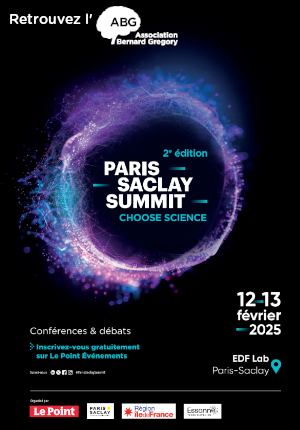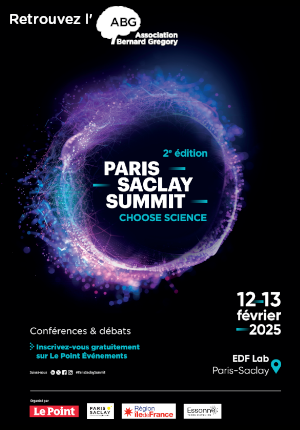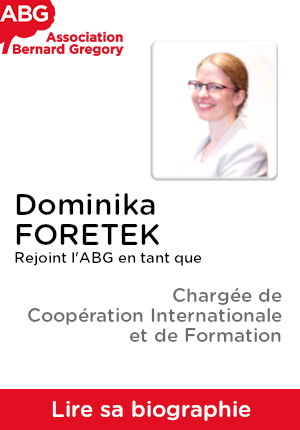Contribution des océans à la géodynamique globale // Contribution of oceans to global Earth's dynamics
|
ABG-128266
ADUM-60255 |
Sujet de Thèse | |
| 01/02/2025 | Contrat doctoral |
Observatoire de Paris
Paris - France
Contribution des océans à la géodynamique globale // Contribution of oceans to global Earth's dynamics
- Terre, univers, espace
rotation de la Terre, océans
Earth rotation, oceans
Earth rotation, oceans
Description du sujet
Mesurer et comprendre les variations de la rotation de la Terre à des échelles de temps allant de l'heure à quelques décennies est crucial pour de nombreuses applications liées aux satellites ainsi que pour améliorer notre connaissance de la structure et de la dynamique de la Terre. Ces changements de la rotation de la Terre proviennent en grande partie des redistributions de masse qui ont lieu dans la couche hydro-atmosphérique, constituée par l'atmosphère, les océans et les eaux continentales (humidité du sol, neige et glace) - et soulevée par la circulation thermique et les marées luni-solaires. Il y a deux décennies, la contribution de l'atmosphère était déjà estimée de manière satisfaisante, mais les transports de masse océaniques étaient encore mal modélisés. Avec l'ajout de données altimétriques satellitaires plus nombreuses et plus précises, les modèles de circulation océanique et de marée offrent maintenant une reconstruction des variations du moment angulaire des océans avec une précision croissante et soulèvent des questions difficiles sur la façon dont les océans peuvent modifier la rotation et la gravité de la Terre à différentes échelles de temps, et en retour, comment ces deux phénomènes nous fournissent des indices reflétant les changements climatiques globaux.
Ainsi, nous proposons de modéliser les effets hydro-atmosphériques sur la rotation de la Terre et dans le champ de gravité à la lumière des modèles les plus récents. Les effets modélisés seront comparés aux mesures géodésiques de la rotation de la Terre (GNSS, interférométrie radio à très longue base, télémétrie satellite-laser, orbitographie Doppler) et du champ de gravité (données des satellites GRACE et GRACE Follow-On).
------------------------------------------------------------------------------------------------------------------------------------------------------------------------
------------------------------------------------------------------------------------------------------------------------------------------------------------------------
Measuring and understanding the Earth's rotation changes at time scales from an hour to few decades is crucial for many applications linked to satellites as well as for improving our knowledge of the Earth's structure and dynamics. These Earth's rotation changes largely stem from mass redistributions taking place in its hydro-atmospheric layer, constituted by the atmosphere, oceans, and continental waters (soil moisture, snow, and ice) - and raised by thermal circulation and lunisolar tides. Two decades ago, the contribution from the atmosphere was already estimated in a satisfactory way, but the oceanic mass transports were still poorly modelled. With the addition of more numerous and accurate satellite altimetry data, ocean circulation and tidal models now offer a reconstruction of ocean angular momentum variations with an increasing precision and raise challenging questions about how the oceans can modify the Earth's rotation and gravity at various time scales, and inversely, how these latter phenomena provide us proxy for studying the Earth's global changes.
Thus, we propose to model the hydro-atmospheric effects on the Earth's rotation and in the gravity field in the light of the most recent models. The modelled effects will be compared with geodetic measurements of the Earth's rotation (GNSS, very long-base radio interferometry, satellite-Laser ranging, Doppler orbitography) and the gravity field (GRACE and GRACE Follow-On satellite data).
Our primary objective is geodynamical. We aim at understanding the excitation process of some puzzling Earth's rotation fluctuation – the free nutation of the liquid core, the variability of the Chandler wobble, the drifting of the rotation axis with respect to the mantle – in link with climatic fluctuations (e.g. El Nino), and to refine the modelling/prediction of the Earth's rotation variations for better operating astrogeodetic techniques. Our modeling effort will focus on the effects of ocean tides, on the impact of the oceanic circulation on the rapid changes (day-to-day) in the Earth's rotation, and on the tidal friction that slows down the Earth's rotation by about 2 ms/century. In parallel, a better knowledge of the excitation mechanism will allow us to revisit the global rheology of the Earth at various time scales, in particular the viscoelastic parameters of the mantle at decennial time scales.
Our second objective is oceanographical. We want to evaluate the relevance of the models describing the ocean tides and circulation in terms to explain the observed variations in the Earth's rotation or gravity field for periods ranging from a few hours to several decades. Particular attention will be paid to the dynamic response of the oceans to the atmospheric and the tidal excitation in the frequency band ranging from a few hours to ten days, for which the hydrostatic approximation called 'inverted barometer' is no longer valid. For this, it is necessary to consider a model of ocean circulation forced by atmospheric pressure describing at best the contribution of small spatial scales to the global circulation, reflecting the dynamical behavior of the oceans.
------------------------------------------------------------------------------------------------------------------------------------------------------------------------
------------------------------------------------------------------------------------------------------------------------------------------------------------------------
Début de la thèse : 01/10/2025
WEB : http://eoc.obspm.fr
Ainsi, nous proposons de modéliser les effets hydro-atmosphériques sur la rotation de la Terre et dans le champ de gravité à la lumière des modèles les plus récents. Les effets modélisés seront comparés aux mesures géodésiques de la rotation de la Terre (GNSS, interférométrie radio à très longue base, télémétrie satellite-laser, orbitographie Doppler) et du champ de gravité (données des satellites GRACE et GRACE Follow-On).
------------------------------------------------------------------------------------------------------------------------------------------------------------------------
------------------------------------------------------------------------------------------------------------------------------------------------------------------------
Measuring and understanding the Earth's rotation changes at time scales from an hour to few decades is crucial for many applications linked to satellites as well as for improving our knowledge of the Earth's structure and dynamics. These Earth's rotation changes largely stem from mass redistributions taking place in its hydro-atmospheric layer, constituted by the atmosphere, oceans, and continental waters (soil moisture, snow, and ice) - and raised by thermal circulation and lunisolar tides. Two decades ago, the contribution from the atmosphere was already estimated in a satisfactory way, but the oceanic mass transports were still poorly modelled. With the addition of more numerous and accurate satellite altimetry data, ocean circulation and tidal models now offer a reconstruction of ocean angular momentum variations with an increasing precision and raise challenging questions about how the oceans can modify the Earth's rotation and gravity at various time scales, and inversely, how these latter phenomena provide us proxy for studying the Earth's global changes.
Thus, we propose to model the hydro-atmospheric effects on the Earth's rotation and in the gravity field in the light of the most recent models. The modelled effects will be compared with geodetic measurements of the Earth's rotation (GNSS, very long-base radio interferometry, satellite-Laser ranging, Doppler orbitography) and the gravity field (GRACE and GRACE Follow-On satellite data).
Our primary objective is geodynamical. We aim at understanding the excitation process of some puzzling Earth's rotation fluctuation – the free nutation of the liquid core, the variability of the Chandler wobble, the drifting of the rotation axis with respect to the mantle – in link with climatic fluctuations (e.g. El Nino), and to refine the modelling/prediction of the Earth's rotation variations for better operating astrogeodetic techniques. Our modeling effort will focus on the effects of ocean tides, on the impact of the oceanic circulation on the rapid changes (day-to-day) in the Earth's rotation, and on the tidal friction that slows down the Earth's rotation by about 2 ms/century. In parallel, a better knowledge of the excitation mechanism will allow us to revisit the global rheology of the Earth at various time scales, in particular the viscoelastic parameters of the mantle at decennial time scales.
Our second objective is oceanographical. We want to evaluate the relevance of the models describing the ocean tides and circulation in terms to explain the observed variations in the Earth's rotation or gravity field for periods ranging from a few hours to several decades. Particular attention will be paid to the dynamic response of the oceans to the atmospheric and the tidal excitation in the frequency band ranging from a few hours to ten days, for which the hydrostatic approximation called 'inverted barometer' is no longer valid. For this, it is necessary to consider a model of ocean circulation forced by atmospheric pressure describing at best the contribution of small spatial scales to the global circulation, reflecting the dynamical behavior of the oceans.
------------------------------------------------------------------------------------------------------------------------------------------------------------------------
------------------------------------------------------------------------------------------------------------------------------------------------------------------------
Début de la thèse : 01/10/2025
WEB : http://eoc.obspm.fr
Nature du financement
Contrat doctoral
Précisions sur le financement
Concours d'accès aux contrats doctoraux*Autre financement ou appel à projet
Présentation établissement et labo d'accueil
Observatoire de Paris
Etablissement délivrant le doctorat
Observatoire de Paris
Ecole doctorale
127 Astronomie et Astrophysique d'Ile de France
Profil du candidat
Compétences élémentaires en mécanique du solide et en programmation
Basic solid mechanics and programming skills
Basic solid mechanics and programming skills
13/03/2025
Postuler
Fermer
Vous avez déjà un compte ?
Nouvel utilisateur ?
Besoin d'informations sur l'ABG ?
Vous souhaitez recevoir nos infolettres ?
Découvrez nos adhérents
 Institut Sup'biotech de Paris
Institut Sup'biotech de Paris  Tecknowmetrix
Tecknowmetrix  CESI
CESI  SUEZ
SUEZ  Laboratoire National de Métrologie et d'Essais - LNE
Laboratoire National de Métrologie et d'Essais - LNE  Nokia Bell Labs France
Nokia Bell Labs France  Généthon
Généthon  ONERA - The French Aerospace Lab
ONERA - The French Aerospace Lab  Ifremer
Ifremer  ADEME
ADEME  MabDesign
MabDesign  Aérocentre, Pôle d'excellence régional
Aérocentre, Pôle d'excellence régional  Groupe AFNOR - Association française de normalisation
Groupe AFNOR - Association française de normalisation  Institut de Radioprotection et de Sureté Nucléaire - IRSN - Siège
Institut de Radioprotection et de Sureté Nucléaire - IRSN - Siège  CASDEN
CASDEN  TotalEnergies
TotalEnergies  ANRT
ANRT  PhDOOC
PhDOOC  MabDesign
MabDesign







